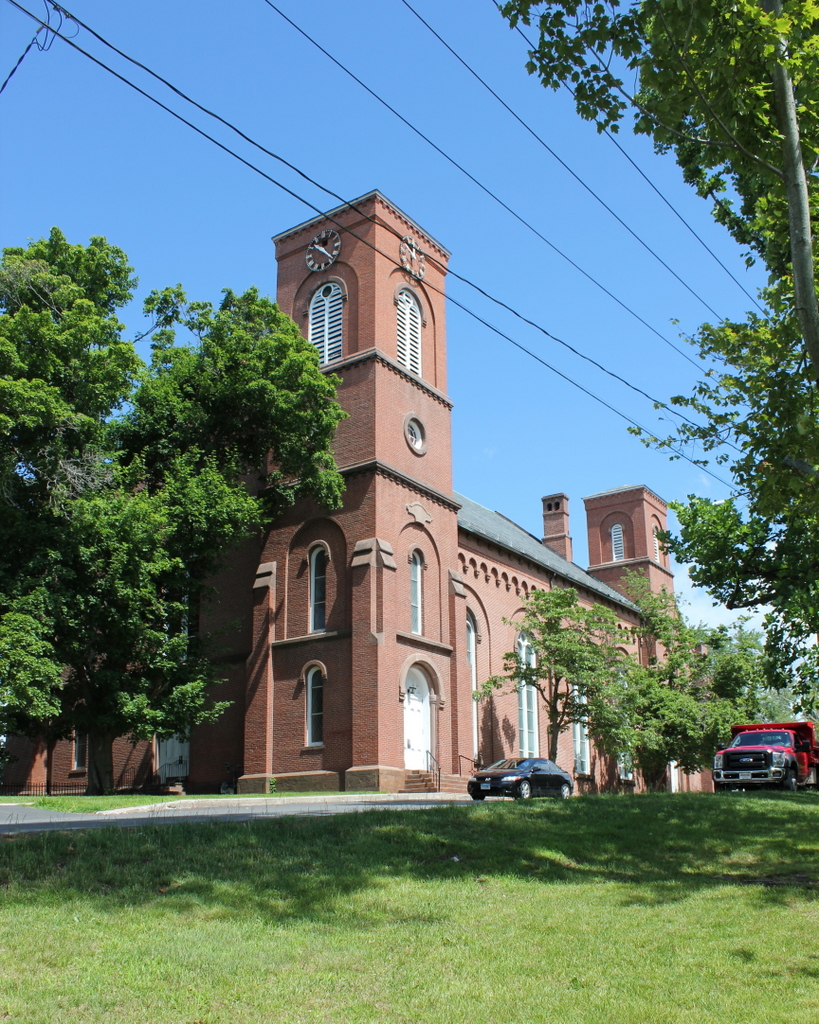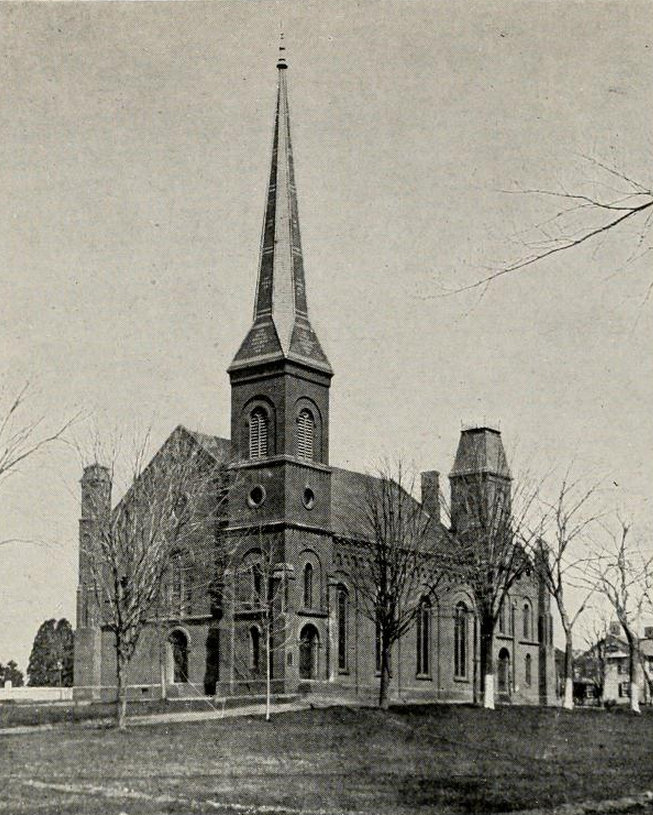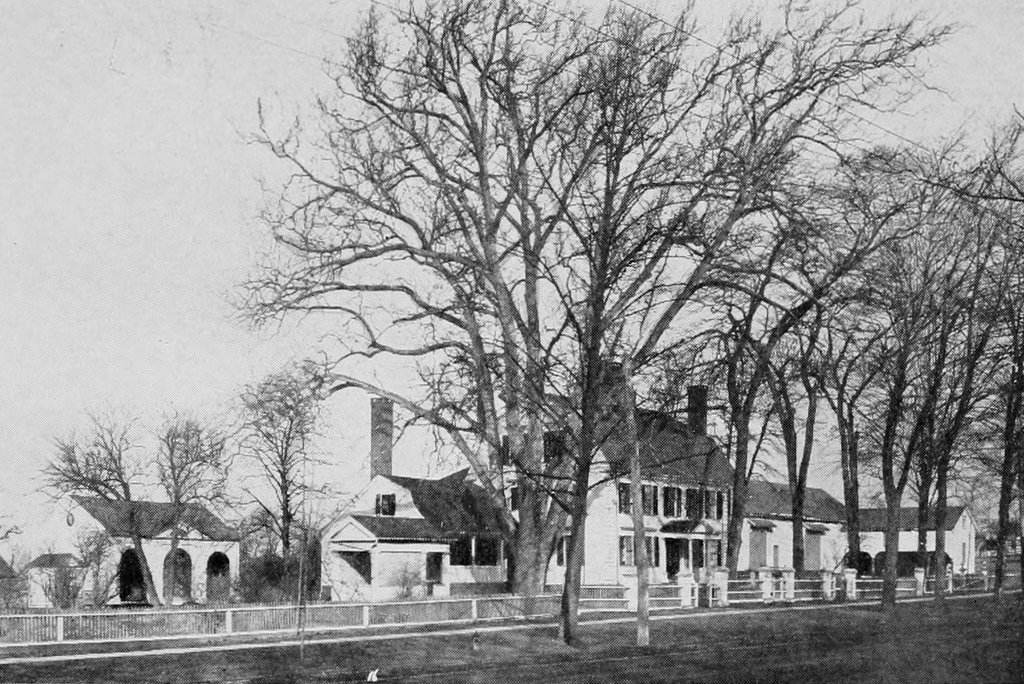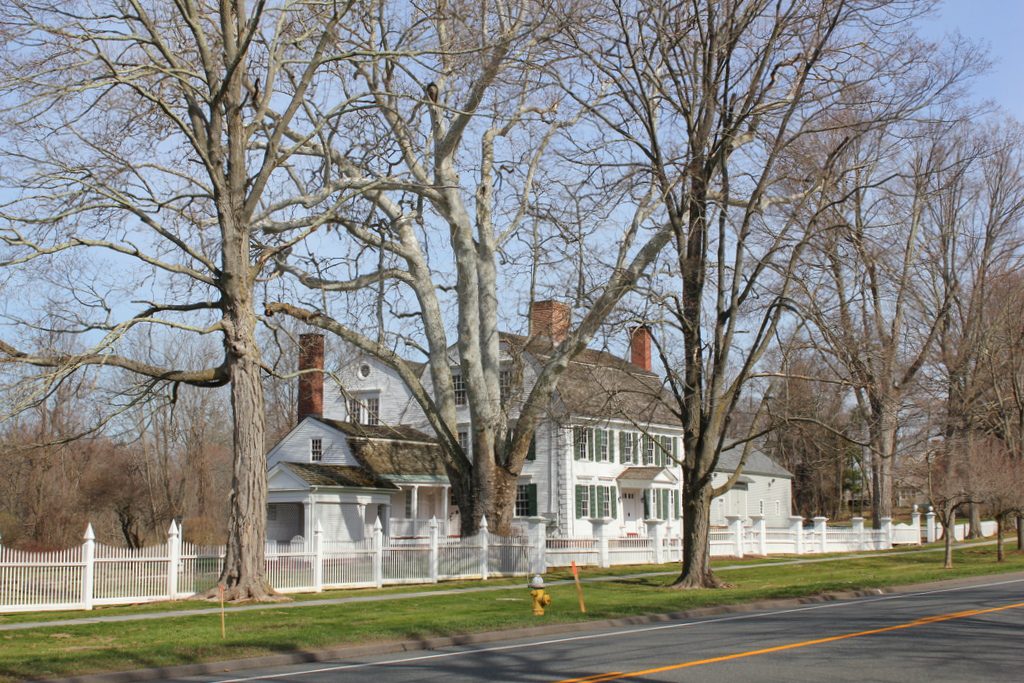The First Congregational Church in Suffield, probably taken around 1920. Image from Celebration of the Two Hundred and Fiftieth Anniversary of the Settlement of Suffield, Connecticut (1921).
The church in 2015:

Suffield’s first church building was built around 1680, and went through a series of relatively short-lived buildings before the present-day one was completed on the west side of the town green in 1869. It has been used by the church ever since, with a few changes. The most obvious difference is the steeple; like many other churches in New England, the top of it was destroyed in the September 1938 hurricane, and it has not been replaced. The other major change isn’t obvious from this angle, but in 1956 a new wing was added to the church on the north (right) side, with classrooms, offices, and other spaces.



